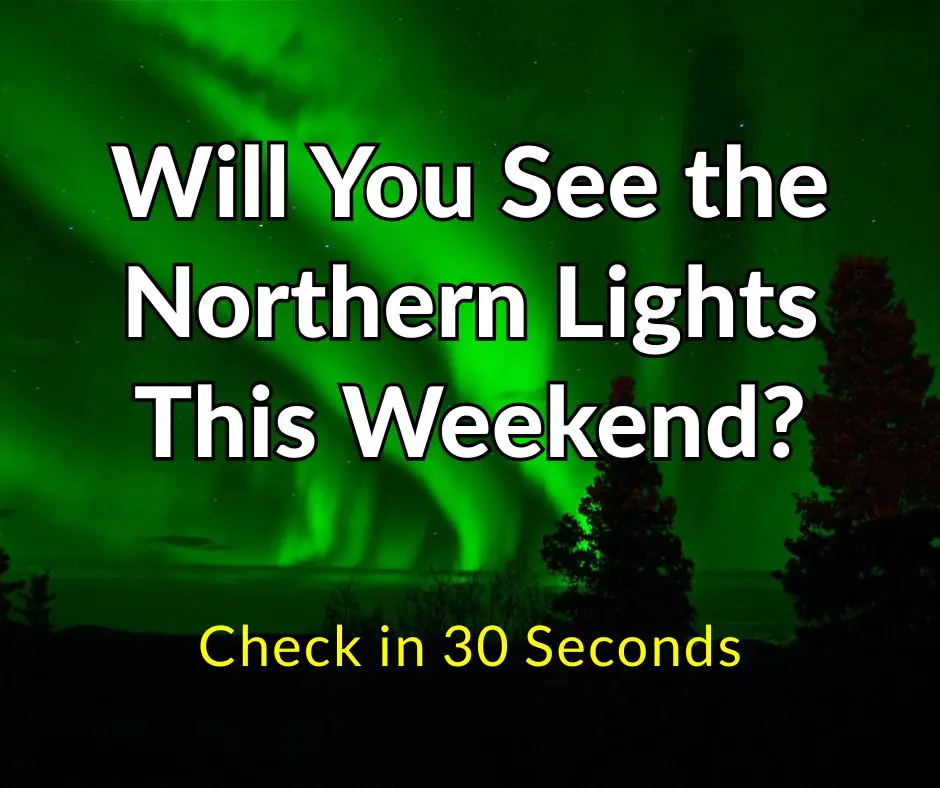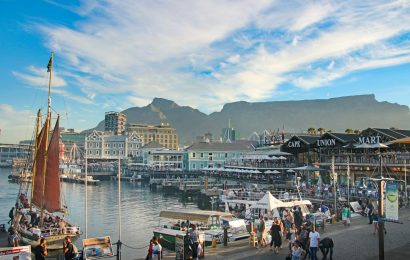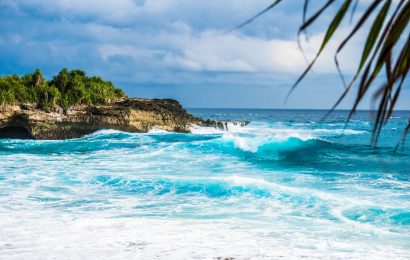The aurora borealis doesn’t wait for anyone, but you don’t need to be an astrophysicist to know if you’ll catch it this weekend. With just one map and one cloud check, you can find out in less than 30 seconds if the Northern Lights will dance above your head.
Here’s how travelers and sky-watchers are planning their nights right now, without guesswork.
Aurora 101: What You’re Actually Seeing
The aurora borealis isn’t just a pretty sky show – it’s a cosmic chain reaction between the Sun and Earth. When the Sun releases bursts of energy in the form of solar flares or coronal mass ejections, streams of charged particles race toward Earth.
Our planet’s magnetic field acts like a giant funnel, pulling those particles toward the poles. When they collide with oxygen and nitrogen molecules high in the atmosphere, the sky lights up in shimmering curtains of color.
Why the Colors Change
- Green: The classic color, caused by oxygen molecules about 60 miles (100 km) above Earth.
- Red: Higher-altitude oxygen (around 200 miles up) glows deep crimson – often during stronger storms.
- Purple and Violet: Nitrogen interactions give the lights a violet or pinkish edge.
- Blue: Less common, but seen when energetic particles collide with nitrogen lower in the atmosphere.
Fun fact: The aurora isn’t static. It pulses, ripples, and dances because the solar wind itself is constantly shifting. That’s why photographers sometimes capture completely different patterns just minutes apart.
Where They Happen
The most reliable aurora zones sit under the “auroral oval,” a ring-shaped band around Earth’s magnetic poles. That’s why countries like Norway, Finland, Iceland, Canada, and Alaska are aurora hotspots.
But when geomagnetic activity spikes, the oval expands southward – suddenly making it possible to see auroras in places like Scotland, Germany, or even parts of the northern United States.
We actually saw this Aurora last year in Romania too – it was an amazing red sky!
Timing: The Solar Cycle
The Sun runs on an 11-year cycle of activity, swinging from quiet to stormy. We’re now climbing toward solar maximum (expected in 2025–2026), which means more solar storms, more energy, and more auroras lighting up the skies worldwide.
For travelers, this is the best time in over a decade to plan an aurora trip.
Why It Feels So Otherworldly
Unlike sunsets or rainbows, auroras connect you directly to space weather – what’s happening 93 million miles away on the Sun. You’re literally watching solar storms paint the atmosphere.
That’s why cultures across the Arctic have centuries of legends and myths about them, from Viking warriors believing they were “reflections of shields” to Indigenous peoples seeing them as spirits dancing across the heavens.
How to See the Northern Lights More Clearly
Even if the aurora is active, where you watch from makes a huge difference. Here’s how to maximize your chances of seeing (and photographing) a strong display:
- Escape the city glow: Light pollution is the #1 enemy of aurora watching. Drive 20–30 minutes outside town, ideally toward the countryside, coastlines, or open fields where the horizon is wide and dark. This is exactly what I recommend for seeing meteor showers!
- Find north-facing views: Auroras appear most strongly in the northern sky, so pick a spot with a clear view in that direction. A lake, hilltop, or open plain works best.
- Turn off nearby lights: Even headlights, street lamps, or house porch lights can wash out faint auroras. Give your eyes at least 20 minutes to adjust to the dark.
- Check the moon phase: A full moon can brighten the sky and make weak auroras harder to spot. Around the new moon is prime viewing.
- Be patient and stay warm: Activity often comes in bursts, sometimes quiet for 30 minutes, then suddenly exploding with color. Bring a thermos, layers, and prepare to wait it out.
- Use a red flashlight: If you need light, switch your phone flashlight to red filter mode (or use a red headlamp) so your night vision isn’t ruined.
- Look up often: Don’t stare only at the horizon – auroras can suddenly arc overhead in ribbons or swirls.
Will You See the Northern Lights This Weekend? Check in 30 Seconds
Step 1: Open the NOAA Aurora Forecast Map
The NOAA Space Weather Prediction Center Aurora Dashboard shows you, in near real time, where the aurora is likely to appear.
Look for the green and red oval across the globe: that’s where the aurora is visible.
The brighter and deeper the colors, the higher the chance of seeing activity.
Slide the time bar to see what’s predicted over the next 30 minutes.
Pro tip: If your location sits under or close to that glowing oval, you’re in luck. If you’re on the edge, you might see a faint glow – perfect for a road trip just outside the city.
Step 2: Check the Clouds Before You Pack a Thermos
Even the strongest aurora can disappear behind thick clouds. That’s why cloud cover is the #1 trip spoiler for sky-chasers.
For US: Use NOAA’s cloud cover forecasts (type your city, then check hourly “Cloud Cover” layers).
👉 Quick rule:
Green oval + clear skies = GO.
Green oval + heavy clouds = wait for another night.
Outside US – Global Cloud Cover Forecast Alternatives
1. Windy.com
- Global coverage, highly interactive map.
- Toggle Clouds or High/Mid/Low Clouds layers for precision.
- You can also overlay aurora activity via plugins.
- Widely used by photographers and aurora hunters.
- Hourly cloud cover forecasts anywhere in the world.
- Gives a “cloud fraction” percentage (0% = clear skies, 100% = fully overcast).
- Has astronomy-specific forecasts (“Astronomical seeing,” “Transparency”) for stargazers.
3. Ventusky.com
- Global animated weather maps.
- Easy to visualize moving cloud layers in real time.
- Intuitive for quick checks before heading out.
- Designed for astronomers.
- Worldwide forecasts broken into low/mid/high clouds + darkness levels.
- Mobile-friendly and quick for sky watchers.
Bonus: The 30-Second Combo Trick
- Open the NOAA aurora forecast map.
- Open your local cloud forecast.
If both maps give you a green light, grab your camera.
That’s it – two tabs, 30 seconds, decision made.
Extra Tips for Travelers
Timing: Best between 10 PM and 2 AM local time.
Light pollution: Drive at least 20–30 minutes out of city centers.
Camera tip: Start with ISO 1600, 10–15 second exposure, tripod mandatory.
Patience: Auroras often come in bursts—don’t leave too soon!
Where to Go if You Want the Best Odds
If you’re serious about seeing the Northern Lights, aim for dark-sky spots in:
- Iceland & Norway (classic aurora hunting grounds).
- Canada’s Yukon, Northwest Territories, and Alberta.
- U.S. favorites: Alaska, Minnesota, Michigan’s Upper Peninsula, and rural Maine.
- Europe bonus: Finnish Lapland and northern Sweden combine auroras with glass igloos and cozy cabins.
Even if you’re further south, don’t ignore alerts. Strong solar storms sometimes push the aurora deep into the continental U.S. or central Europe – rare, but unforgettable.
Why This Weekend Matters
Geomagnetic activity changes fast, but when solar storms are active, visibility can extend further south than usual. That means states like Minnesota, Wisconsin, or even New York may get a rare show, while northern Europe and Canada could be glowing all night.
In Conclusion
Checking if you’ll see the Northern Lights doesn’t need endless scrolling through astronomy forums. Just two maps, 30 seconds, and you’ll know if tonight is your night.





